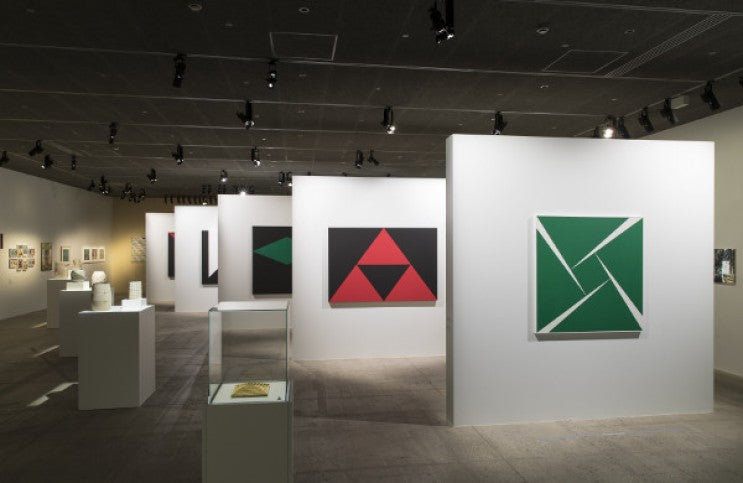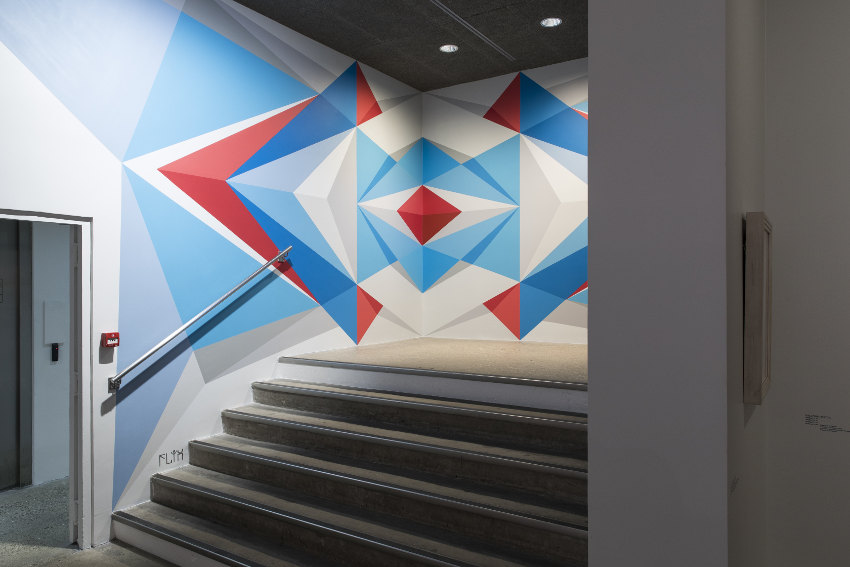
The Wonders of Geometric Art of Latin America
One of the most intriguing exhibitions of abstract art anywhere in the world right now is on view at the Fondation Cartier pour l'Art Contemporain in Paris. Titled Southern Geometries, from Mexico to Patagonia, the exhibition covers the entire history of geometric art in Latin America. Works on view represent a legacy dating from the Valdivia people, who settled in Ecuador about 3500 years ago, to the present day. The reasons this exhibition is special go beyond the fact that the work is visually stunning. It is also extraordinary because it gives indigenous artists their due by exhibiting their work with equal stature alongside the works of colonial, Modernist, and contemporary abstract artists and designers. The curation shatters many old illusions. On a subtle note for me it shattered the illusion I commonly make that there is some fundamental difference between geometric abstraction and so-called “biomorphic” abstraction. Throughout this exhibition, in fact, I became so used to spotting geometric patterns that I started to see them hiding in plain sight in the various materials used in the work on view. Geometric patterns lurk in the linear structures of wood and the crystalline formations of rocks, not to mention their presence in fruits and vegetables, proving geometry is in fact an essential part of the organic world. But the biggest assumption the exhibition shatters is the belief that 19th and 20th century Western societies lay claim to the invention of abstract art. The cultures who made the oldest objects in this exhibition were involved with geometric abstraction long before Malevich, Picasso and Mondrian. Rather than recognizing the genius in their material creations, European colonists assimilated them into their own culture, assuming it was superior. Seeing these objects confidently declaring their undeniable status alongside more recent creations is a potent reminder of the mistaken notions of our colonial past. It is a much needed acknowledgement of the unbroken aesthetic lineage to which contemporary art clearly belongs, proving that abstraction has been part of human visual culture since our culture began.
Building on Tradition
The first thing I noticed about this exhibition is the geometric quality of the building in which it is housed. The linear beams and rectangular windows are counterbalanced by a triangular metal support network. The structure is unmistakably modern, and yet within the main atrium a massive installation by Paraguayan architects Solano Benitez and Gloria Cabral begs the question of whether the underlying design of the building is really as modern as we think. Using shattered bricks and concrete, these designers created a modular sculpture of triangles that speaks in elegant conversation with the architectural bones of the building. The material qualities of their piece evoke the handmade legacy of human architecture and remind us that the patterns and rhythms deployed in our contemporary world date back to our earliest ancestors. Yet in the same gallery, 23 intricate wire sculptures by Venezuelan abstract artist Gego remind us that indeed there are some contemporary artists who have taken the exploration of geometric abstraction to astonishing new heights. All of the wonder of what is possible when the modern imagination is combined with modern materials and techniques comes through in these fantastical works.

Southern Geometries, from Mexico to Patagonia, installation view at the Fondation Cartier pour l'Art Contemporain, 2018. Photo © Thibaut Voisin
In the main gallery, however, is where the real power of this exhibition shows itself. This is where 220 artworks from 70 artists representing more than 15 nations mingle together across the span of time. Inspiration flows confidently in every direction. Centuries-old volcanic rock sculptures are juxtaposed with a 21st century hanging cotton sculpture by Olga de Amaral, which is itself evocative of a mis-20th century “Penetrable” by Jesús Rafael Soto. The linear geometric designs on centuries-old indigenous walking sticks speak in perfect conversation with the patterns decorating the “Torres de Satélite” (1968) in Mexico, conceived of by Mexican architect Luis Barragán, painter Jesús Reyes Ferreira and sculptor Mathias Goeritzas and captured for this exhibition in a photograph taken by Armando Salas Portugal. In every item on view, the patterns, shapes and forms seem to declare that they transcend any sort of artificial delineation of medium or method. We see the same visual lexicon painted on buildings, ceramics, and textiles also being expressed on canvases by Cuban-born painter Carmen Herrera and Brazilian artist Luiz Zerbini.

Southern Geometries, from Mexico to Patagonia, installation view at the Fondation Cartier pour l'Art Contemporain, 2018. Photo © Thibaut Voisin
Legacies Lost and Found
Among the more complicated aspects of the exhibition, at least for me, comes by way of photographs on view that show the painted bodies of indigenous people who lived in Chile in the early 20th century. It is not the body painting that perplexes me. On the contrary, that is the aspect of the photographs that moved me, with its expression of something deeply beautiful and spiritual. What disturbed me,rather, is that the photographer is the only one named. The photographer was Martin Gusinde, an Austrian priest who came to South America as a missionary. His study of these people was anthropological in a sense. But in another sense it is shrouded in the unmistakable fog of assumed cultural superiority that accompanies all missionary expeditions. Were these photographs taken by a humble ethnologist who simply wanted to understand the differences between different people? Or were they taken by someone who believed his mission was to covert so-called primitive people to a different belief system?

Southern Geometries, from Mexico to Patagonia, installation view at the Fondation Cartier pour l'Art Contemporain, 2018. Photo © Thibaut Voisin
Maybe it ultimately does not matter what context I attribute to the photographs, or to any of the other works on view in this show. There is likely as much argument to made against photographs taken by missionaries as there is an argument to be made against displaying 3500-year old sculptures taken from their resting place by conquistadors. The point of this exhibition is not to critique how these objects got here, nor what the intentions were of those who found them or made them. The point is purely visual. There is a definitive statement being made by the curators about the universality of the appreciation for geometric abstract art, that it is something that clearly connects human cultures of all different types and from all across the eons. Southern Geometries, from Mexico to Patagonia is on view at the Fondation Cartier pour l'Art Contemporain in Paris through 24 February 2019.
Featured image: Southern Geometries, from Mexico to Patagonia, installation view at the Fondation Cartier pour l'Art Contemporain, 2018. Photo © Thibaut Voisin
By Phillip Barcio






